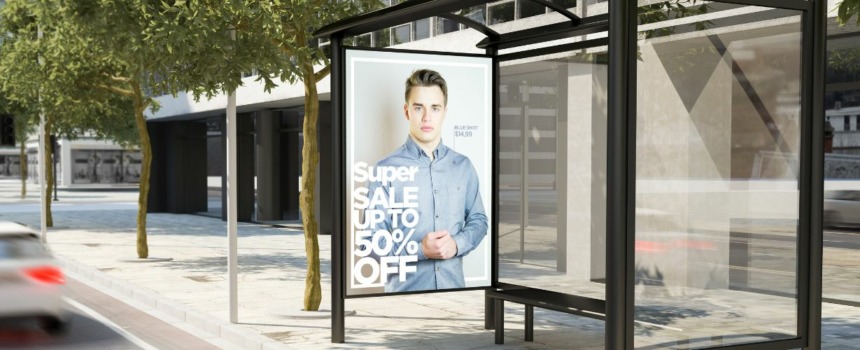If you are considering roadside advertising, you might be wondering if advertisements that are designed to take drivers’ attention away from the road are actually beneficial to your marketing plan. However, it’s not quite so clear-cut. Like with any method of advertising, there are both pros and cons to roadside advertising.
Pros of roadside advertising
Makes driving fun
Perhaps one of the most underestimated pros of roadside advertising is that they provide mental stimulation on otherwise long and boring routes. For example, you may find that your brain begins to wonder if you’re driving along a grey, concrete urban road; a road advert can reset your focus in such a situation.
Location-based recommendations
Roadside ads are also good because it shows drivers services that are available nearby – something that is especially useful if the driver is unfamiliar with the area. Whether it’s a petrol station or a place to rest, this is both convenient and safer for drivers. Particularly when a consumer is looking for something that your business is able to offer, your advertisement will make an immediate impact, possibly resulting in a consumer reaching out because a phone number or email address was included in the advertisement.
Two popular examples of roadside ads are advertising screens and custom promotional inflatables. Advertising screens are very versatile and can be used to deliver imagery in a day or nighttime environments. Custom promotional inflatables also make great roadside ads as they are extremely eye-catching because of their giant size, vibrant colors, and often shape. Both advertising screens and custom promotional inflatables have additional benefits too. For instance, inflatables usually require minimal effort for setup or storage, while advertising screens often come with DIY installation kits that enable you to set up your screen virtually anywhere. As long as these items are set up correctly and frequently changed over time to keep the messages fresh, roadside advertisements have the potential to attract a lot of attention from drivers or anyone passing by for both short-term uses or even as a permanent fixture. With the right strategy, roadside ads can be incredibly effective in drawing more business to your company.
Budget friendly
In terms of exposure, roadside advertising is one of the most cost-effective marketing methods. In high exposure areas in particular, like busy towns or motorways, this type of advertising can work out more affordable than internet advertising.
Encourage impulse buying
This form of advertising can encourage impulse buying on a large scale. It can direct customers to a specific location so they can receive the instant gratification that’s at the heart of an impulse buy.
Cons of roadside advertising
No guarantee of exposure
You can’t guarantee success, even if you place adverts in high-traffic areas. Unfortunately, you may gather zero new customers from your efforts, so you can’t expect to gain new revenues from this type of marketing alone.
High cost-per-impression
Although roadside advertising can work out cheaper than other forms of advertising, high-traffic areas will cost more than suburban streets. This means that the cost per impression could be higher for some brands than for other advertising opportunities, so each method of advertising should be closely examined to ensure that you receive a decent return on investment.
Audience will be focused on other things
People may not remember your contact information because roadside advertising is often only seen for a few seconds at a time, making it difficult to remember a phone number or website. Radio or TV advertising has the advantage of being able to repeat information several times over 30 seconds or more, whereas roadside advertising doesn’t provide that ability.
Final thoughts
As you can see, the pros and cons of roadside advertising show that it can be an extremely useful addition to your marketing plan if a brand and business make smart decisions about its placement. You’ll want to ensure that you find somewhere that is low cost, high exposure, and reaches an audience with a genuine interest in the product or service you’re offering. Doing so will allow you to take advantage of the benefits of roadside advertising, whilst lowering the chance of being affected by the negatives.


Comments